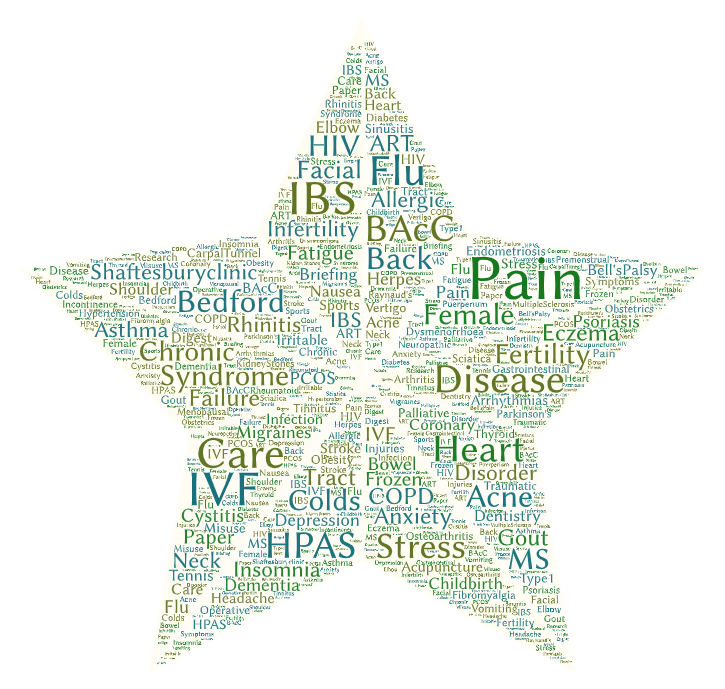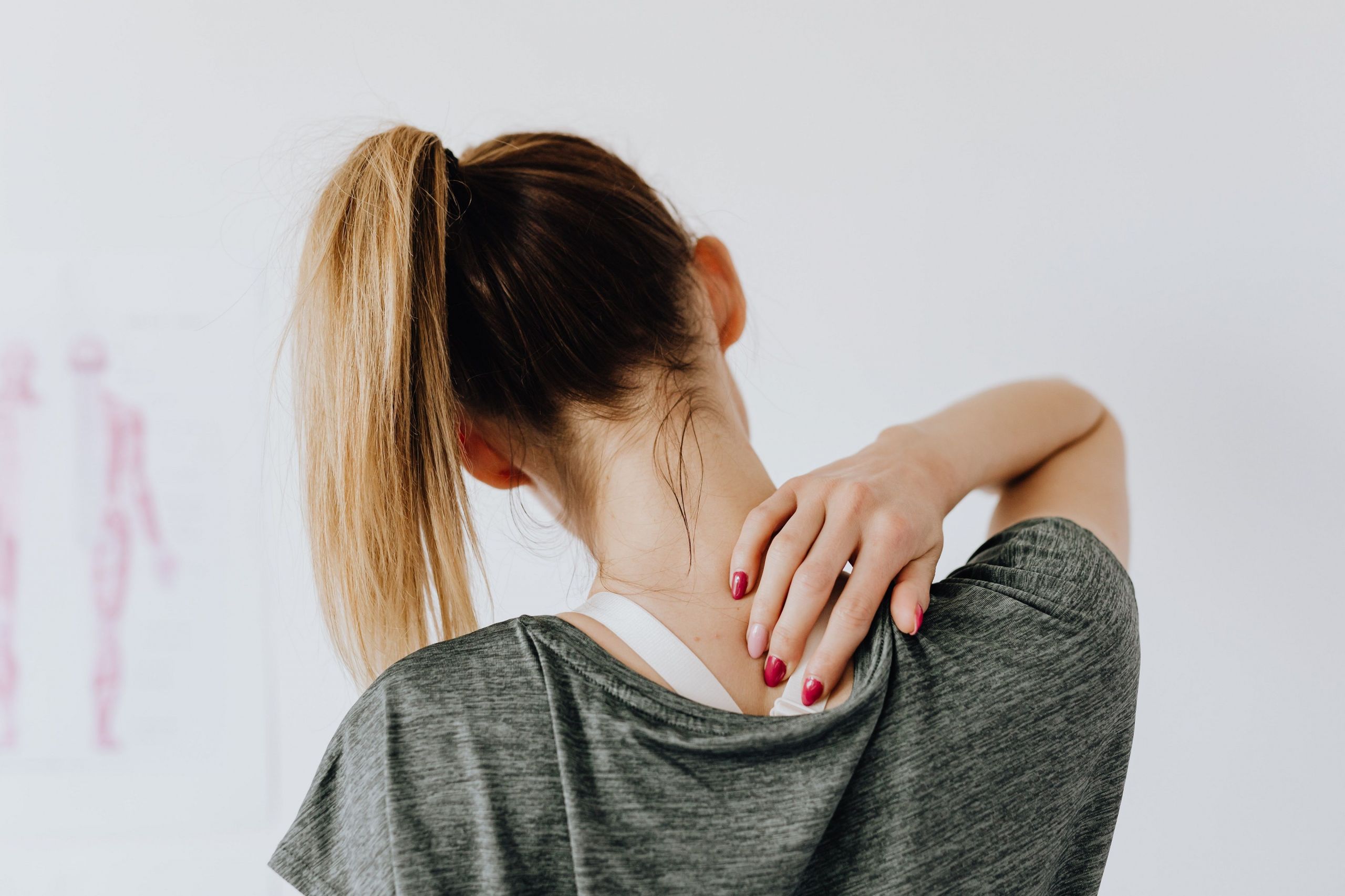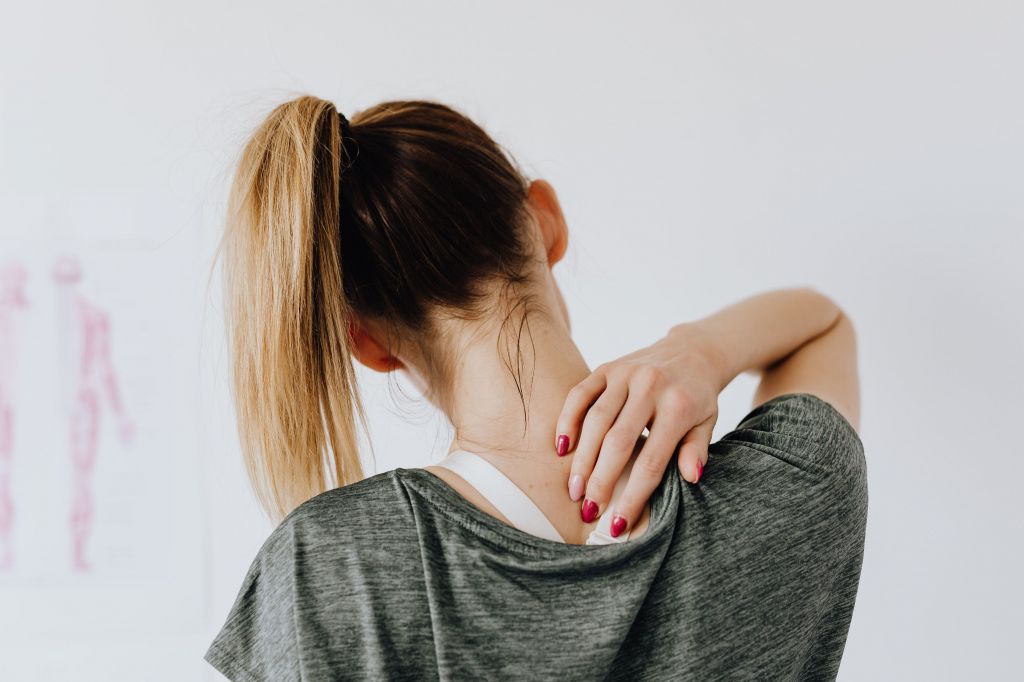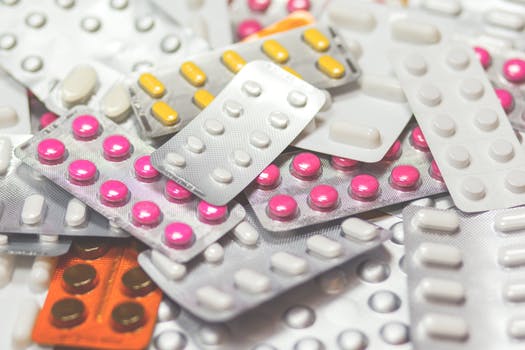See our in-depth blog about the NICE guidelines regarding recommendation of acupuncture for Chronic Pain, which is an evidence base piece informing NHS practise.
Important to know: Chronic health conditions should be addressed under direct medical supervision of your GP or consultant, and acupuncture would be an adjunct or complement to usual care – we advise that you let you doctor know when you use this approach.
Chronic Pain in General
“Acupuncture is effective for the treatment of chronic musculoskeletal, headache, and osteoarthritis pain. Treatment effects of acupuncture persist over time and cannot be explained solely in terms of placebo effects. Referral for a course of acupuncture treatment is a reasonable option for a patient with chronic pain”. (Vickers et al, 2018: large chronic pain review of high quality RCTs updating a previous meta-analysis; 39 trials, n=20827; conditions addressed chronic headache, back/neck pain and osteoarthritis)
Another recent overview (Yin et al, 2017) confirms that there is increasing evidence for acupuncture as an effective, safe, and cost-effective intervention in chronic low back, neck, shoulder, and knee pain, as well as headaches.
The NHS body in charge of which treatments should be used in particular conditions recommends acupuncture for chronic pain: The NICE Scenario Management guidelines (2021) for chronic pain state: “consider a course of acupuncture or dry needling, within a traditional Chinese or Western acupuncture system”
Overall, a large systematic review has found acupuncture a cost effective intervention for several painful conditions (Ambrósio et al, 2012).
There are many painful conditions for which patients seek acupuncture to address their symptoms. We have dedicated pages for arthritis, back pain, carpal tunnel, facial (TMJ) pain, shoulder and frozen shoulder, headache, migraine, kidney stones, plantar fasciitis, knee pain, sciatica, neuropathic (nerve) pain, rheumatoid arthritis, tennis and golfer’s elbow, neck pain, and pelvic pain each of which give references and further resources to evidence based factsheets and may be of use.
Mechanisms of action on pain:
Acupuncture studies have shown it can: provide pain relief by stimulating nerves in body tissues and leading to endorphin release (natural painkilling substances), as well as downregulating the brain and nervous system’s reaction to stress and pain (Zhao 2008; Zijlstra et al, 2003; Pomeranz, 1987). Acupuncture can activate mast cells at acupoints, which release histamine, serotonin, adenosine, and other mediators that modulate nerve transmission and inflammation (Li et al, 2022)
Acupuncture stimulates the body to create its own natural painkilling substances, such as Beta Endorphins (β-Endorphin). In studies acupuncture has been shown to stimulate the production of natural painkillers called opioid-like peptides (OLPs), including β-Endorphin: For example, this was shown in an RCT in 90 patients with a range of painful disorders (Petti et al, 1998). The same study showed acupuncture also and enhanced the activity of immune cells (lymphocytes, natural killer cells and monocytes) that help fight infections and diseases (Petti et al, 1998).
Acupuncture has been shown in animal models to promote the release of factors that involved in the reduction of inflammation (vascular and immunomodulatory factors – (Kim et al, 2008; Kavoussi and Ross, 2007 [review article]; Zijlstra et al, 2003), and also to affect levels of serotonin (in an animal model), and other peptides in the brain and nervous system and modulate blood flow in the brain and elsewhere in the body, in humans (Zhong and Li, 2007; Shi et al, 2010).
Zijlstra et al (2003) reviewed the effects and mechanisms of acupuncture in treating various inflammatory diseases and conditions. They proposed the mechanisms of action:
- Acupuncture may release neuropeptides from nerve endings that have vasodilative and anti-inflammatory effects through CGRP.
- Acupuncture may also interact with substance P, which is involved in pain transmission and inflammation.
- Acupuncture may contribute to analgesia by stimulating the release of β-endorphin, which binds to opioid receptors and inhibits pain signals.
- Acupuncture may influence the balance between cell-specific pro-inflammatory and anti-inflammatory cytokines such as TNF-α and IL-10.
More detail on neurotransmitters in acupuncture for pain is in our blog.
In an animal study, Sun et al, (2023) were able to show that electroacupuncture worked by blocking a pathway in the synovium called TLR2/4, that activates immune response and inflammation. The researchers therefore suggested the anti-inflammatory and analgesic effects of EA were related to the inhibition of TLR2/4 signalling on synovial fibroblasts and macrophages.
Liu et al (2014) investigated the anti-inflammatory effect of electroacupuncture (EA) in a rat tissue chamber model of inflammation. The study found that EA inhibited the p65 protein from moving to the cell nucleus to activate inflammatory genes. EA also increased the expression of IκBα, which binds to NF-κB and preventing it from entering the nucleus to activate inflammatory genes. These interfere with the IκB/NF-κB pathway that regulates inflammation, indicating one of the mechanisms of acupuncture in modulating immune / inflammatory response.
Wang et al (2023) reviewed evidence from animal and human studies regarding the immunomodulatory mechanism of acupuncture, regarding its effects on different components of the immune system, such as mast cells, macrophages, neutrophils, natural killer cells, astrocytes, microglia, CD4+ and CD8+ T cells, and cytokines. They detailed the neuroanatomical mechanisms of acupuncture in immunomodulation, such as the vagal-adrenal pathway, the cholinergic anti-inflammatory pathway, the spinal sympathetic pathway, the brain-gut axis, and the hypothalamus-pituitary-adrenal axis. They concluded that studies to support the role of acupuncture in regulating inflammation, infection, allergy, pain, and tissue repair.
Electroacupuncture (EA) has been shown in a rat model (Li et al, 2008) to have anti-inflammatory benefits by modulating the hypothalamic-pituitary-adrenal (HPA) axis, (HPA axis regulates the stress response and immune function). Specifically, Li et al outlined that EA sets off a cascade in the brain (via corticotropin-releasing hormone, and adrenocorticotropic hormone) to produce cortisol, which reduces inflammation and oedema.
About the research: It is worth noting that in research, randomised controlled studies (RCT) are the most reliable in terms of quality of evidence, with a systematic review or meta analysis of numerous studies being the best way of seeing the overall picture of the state of the evidence. Below we have a selection of the available research, which does include some larger RCTs, and reviews of the literature alongside smaller studies. The n= figure tells you how many people were participants in the study.
Resources:
Evidence Based Acupuncture – Factsheet on Chronic Pain
References:
Chronic Pain in General References:
Vickers, A.J., Vertosick, E.A., Lewith, G., MacPherson, H., Foster, N.E., Sherman, K.J., Irnich, D., Witt, C.M., Linde, K. and Acupuncture Trialists’ Collaboration, 2018. Acupuncture for chronic pain: update of an individual patient data meta-analysis. The Journal of Pain, 19(5), pp.455-474.
Birch, S., Lee, M.S., Alraek, T. and Kim, T.H., 2018. Overview of treatment guidelines and clinical practical guidelines that recommend the use of acupuncture: a bibliometric analysis. The Journal of Alternative and Complementary Medicine, 24(8), pp.752-769.
NICE 2021 Chronic pain: Scenario: Management Last revised in April 2021
Yin, C., Buchheit, T.E. and Park, J.J., 2017. Acupuncture for chronic pain: an update and critical overview. Current opinion in anaesthesiology, 30(5), pp.583-592.
Mechanism of Action References:
Kavoussi B, Ross BE. The neuroimmune basis of anti-inflammatory acupuncture. Integr Cancer Ther. 2007 Sep;6(3):251-7.
Kim HW, Uh DK, Yoon SY et al. Low-frequency electroacupuncture suppresses carrageenan-induced paw inflammation in mice via sympathetic post-ganglionic neurons, while high-frequency EA suppression is mediated by the sympathoadrenal medullary axis. Brain Res Bull. 2008 Mar 28;75(5):698-705.
Li, A., Lao, L., Wang, Y., Xin, J., Ren, K., Berman, B.M., Tan, M. and Zhang, R., 2008. Electroacupuncture activates corticotrophin-releasing hormone-containing neurons in the paraventricular nucleus of the hypothalammus to alleviate edema in a rat model of inflammation. BMC Complementary and Alternative Medicine, 8(1), pp.1-8.
Li, Y., Yu, Y., Liu, Y. and Yao, W., 2022. Mast cells and acupuncture analgesia. Cells, 11(5), p.860.
Liu, F., Fang, J., Shao, X., Liang, Y., Wu, Y. and Jin, Y., 2014. Electroacupuncture exerts an anti-inflammatory effect in a rat tissue chamber model of inflammation via suppression of NF-κB activation. Acupuncture in Medicine, 32(4), pp.340-345.
Petti, F.., Bangrazi, A., Liguori, A., Reale, G. and Ippoliti, F., 1998. Effects of acupuncture on immune response related to opioid-like peptides. Journal of Traditional Chinese Medicine 18(1), pp.55-63.
Pomeranz B. Scientific basis of acupuncture. In: Stux G, Pomeranz B, eds. Acupuncture Textbook and Atlas. Heidelberg: Springer-Verlag; 1987:1-18.
Shi H, Li JH, Ji CF, Shang HY, Qiu EC et al.[Effect of electroacupuncture on cortical spreading depression and plasma CGRP and substance P contents in migraine rats]. Zhen Ci Yan Jiu. 2010 Feb;35(1):17-21.
Sun, S.Y., Yan, Q.Q., Qiao, L.N., Shi, Y.N., Tan, L.H. and Yang, Y.S., 2023. Electroacupuncture Alleviates Pain Responses and Inflammation in Collagen-Induced Arthritis Rats via Suppressing the TLR2/4-MyD88-NF-κB Signaling Pathway. Evidence-Based Complementary and Alternative Medicine, 2023.
Wang, M., Liu, W., Ge, J. and Liu, S., 2023. The immunomodulatory mechanisms for acupuncture practice. Frontiers in Immunology, 14.
Zhao ZQ. Neural mechanism underlying acupuncture analgesia. Prog Neurobiol. 2008 Aug;85(4):355-75.
Zhong G.-W. Li W. Effects of acupuncture on 5-hydroxytryptamine1F and inducible nitricoxide synthase gene expression in the brain of migraine rats. Journal of Clinical Rehabilitative Tissue Engineering Research. 2007;11(29)(pp 5761-5764)
Zijlstra FJ, van den Berg-de Lange I, Huygen FJ, Klein J. Anti-inflammatory actions of acupuncture. Mediators Inflamm. 2003 Apr;12(2):59-69.





 in particular if you are using over the counter medications, they can advise you of contraindications and interactions they may have with your prescribed medications.
in particular if you are using over the counter medications, they can advise you of contraindications and interactions they may have with your prescribed medications. The research evidence for acupuncture is growing, and we find that medical professionals are more and more aware of what we do, in some cases recommending acupuncture for particular conditions, so be sure to tell you GP if you are thinking of acupuncture, and keep them up to date on how you are getting along.
The research evidence for acupuncture is growing, and we find that medical professionals are more and more aware of what we do, in some cases recommending acupuncture for particular conditions, so be sure to tell you GP if you are thinking of acupuncture, and keep them up to date on how you are getting along.